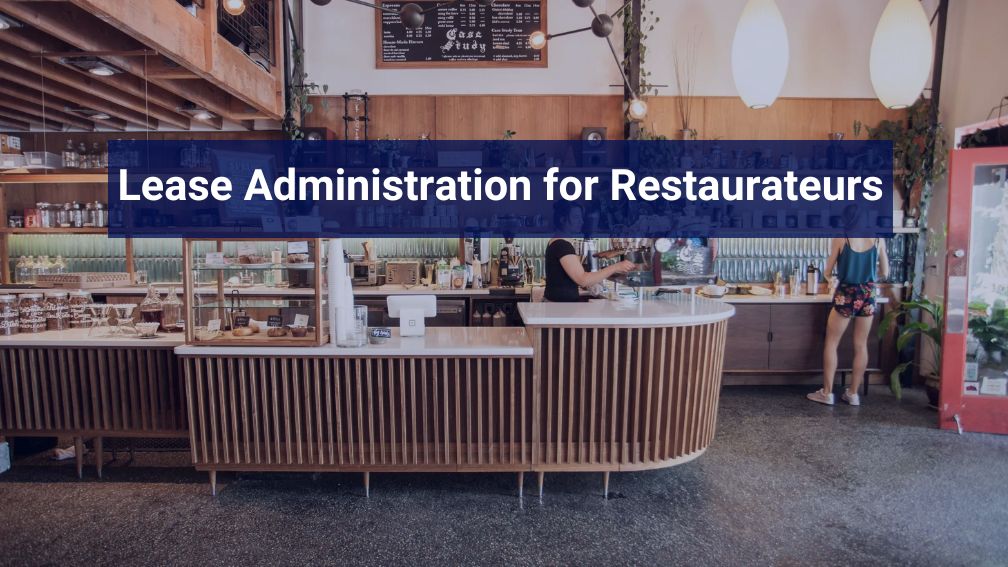Using Lease Management Software to Navigate the Changing Restaurant Industry
Last Updated on April 6, 2023 by Morgan Beard
The restaurant industry has always been fairly nimble and adaptable, implementing fresh business models in light of new trends. Admittedly, though, these past couple of years have provided a bit more of a challenge.
Case in point: Most restaurants open in dense urban areas or cater to the working crowd. With the start of COVID-19, however, more people began working remotely — turning that common restaurant real estate strategy on its head. In fact, the National Restaurant Association’s “2021 State of the Restaurant Industry Mid-Year Update” found that 60% of people changed their restaurant habits due to the delta variant. This isn’t a new development, though. According to Datassential, over 10% of restaurants have permanently closed since the pandemic began.
On the flip side, some other restaurants were able to nimbly respond (and survive) by adopting what many would call an omnichannel restaurant strategy. The logic went that this move certainly worked for retail, so the same would likely apply to the restaurant industry. By and large, restaurants began offering online ordering, curbside pickup, delivery, and even meal kits — not to mention more outdoor seating. And that decision appeared to pay off, with food and beverage sales previously projected to increase 20% last year, according to the National Restaurant Association study referenced earlier.
Where Restaurants’ Real Estate Strategies Factor In
As a restaurant owner or operator, you have reason to still be optimistic. But that optimism should never cloud the need to reevaluate your restaurant’s real estate strategy in this ever-changing environment. Although people are returning to indoor dining, a strategy that revolves solely around traditional brick-and-mortar restaurant space no longer works. With this in mind, consider ghost kitchens, warehouse spaces meant for meal delivery services, additional parking for curbside pickup, and other factors that support an omnichannel restaurant strategy as you move into 2022.
Understand, however, that a baseline knowledge around the legal and financial components of any lease will also be critical to success; this will help you navigate the complexities of restaurant real estate and build a sound strategy. But this requires a healthy dose of data, which is why technology has become even more critical to the restaurant real estate management process.
Leveraging New Technology in Restaurant Real Estate Strategies
Real estate management takes a significant amount of time and effort, and especially in an often-speculative business like the restaurant industry. Thankfully, lease management software helps unlock the tedious tasks associated with lease administration, freeing up time for you to focus on other aspects of the real estate management process. Here’s what you can expect when using Occupier’s lease management software to manage your restaurant’s real estate footprint:
1. Lease management automation.
Lease management software can do more for the real estate management process than simply centralizing your portfolio of leases. It also removes much of the risk inherent in a lease portfolio by automating notifications surrounding critical dates that need attention. You’ll never miss lease renewals, expirations, security deposit returns, and other important administrative items.
After all, paper tracking has become a thing of the past — and automating such processes can save money. A Deloitte survey found that 45% of companies expected to see 10% to 20% cost savings as a result, with some companies expecting even more.
2. Data analytics.
It isn’t uncommon for companies to manage leases across multiple systems. If those systems “talked” to one another, this wouldn’t necessarily be a problem, but that’s rarely the case. Reporting errors start to occur, team members work off different information, and processes grow increasingly complex — all in all, decision-making becomes more of a guessing game.
On the other hand, centralizing all those unique restaurant real estate data points into a single system makes critical information easily accessible. You can aggregate real-time data into a visually pleasing dashboard, which then provides analytics that allow for more strategic decisions. Pull a report, and your team can trust and understand the risk and opportunities associated with all your brick-and-mortar properties.
3. Team collaboration.
Your lease begins upon signing a new restaurant real estate agreement, as does the real estate management process involving numerous stakeholders. Site build-out falls to the operations team, lease accounting goes to the finance team, and lease administration is up to the real estate team. With Occupier’s lease management software, each internal and external stakeholder can work on their piece of the lease life cycle while collaborating throughout the entire process.
Getting into the restaurant industry is already a risky business. Why add to it by leaving real estate management to archaic processes? Invest in lease management software that allows you to take accurate control of your physical portfolio and make more informed decisions involving your restaurant real estate strategy.
If you’d like to learn more about our lease management software, please feel free to schedule a restaurant-focused demo today. We’d be happy to find a solution perfectly suited to your needs.
